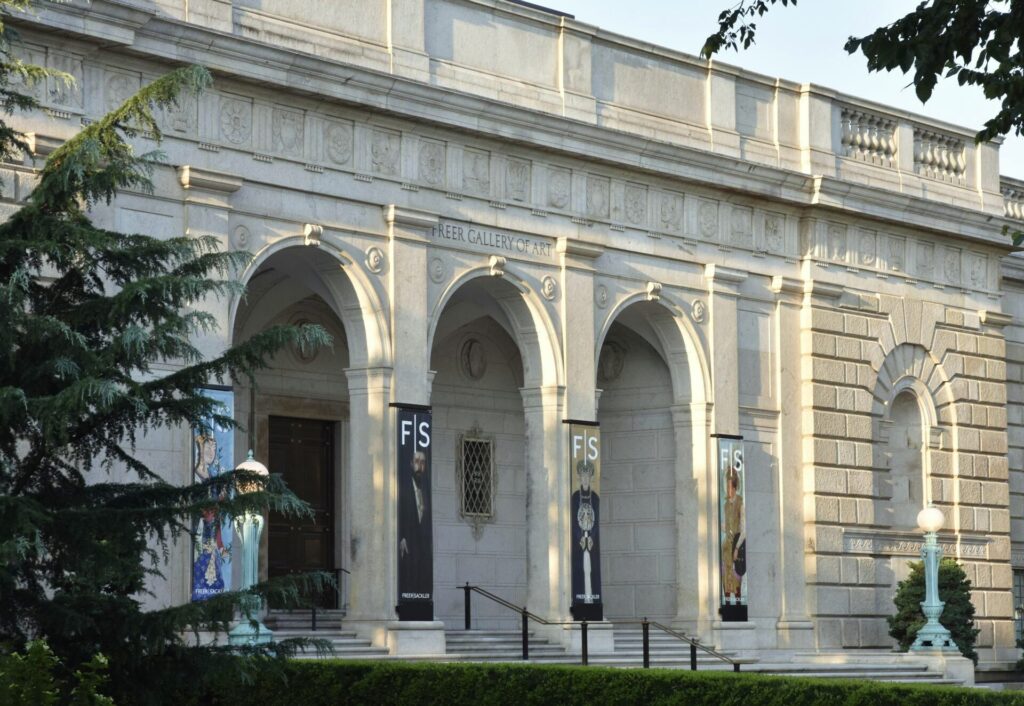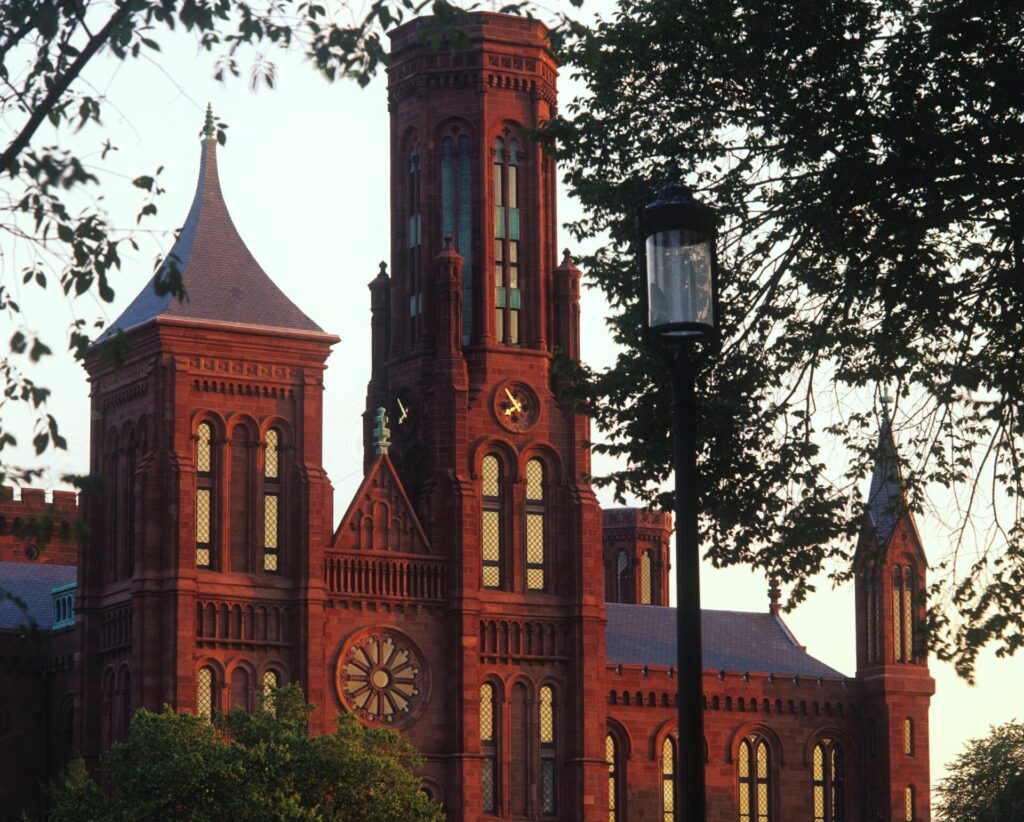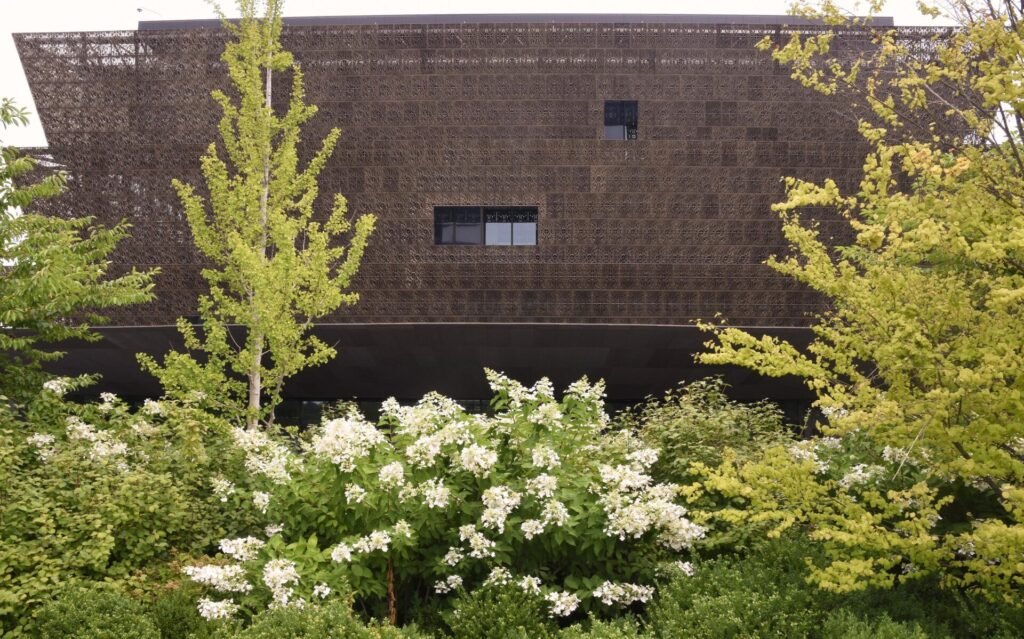Our nation’s capital city is only a short distance from the Cumberland Valley, and is a perfect winter weekend destination. With a multitude of attractions, planning a trip to DC could feel overwhelming, but less so with a simple itinerary.
One easy plan is exploring the National Mall. Along this greenway is a collection of the country’s finest museums and monuments. The topography is flat and easily covered on foot. What makes this area even more attractive: most venues are free to the public. Rather than try to experience all of DC in one hectic visit, consider slowing down and focus on the attractions along the National Mall.
The National Mall was first conceived in landscape architect Pierre L’Enfant’s original Washington, DC master design plan. He envisioned a grand avenue that would serve as a dignified and symbolic setting for the city’s governmental structures, monuments, and museums. Today, the National Mall serves that purpose in a two-mile stretch between the United States Capitol and the Lincoln Memorial. The tract is surrounded by elm trees and lined with unpaved pathways. The mall is uncluttered, free of commercial distractions, and a wonderful place for exploration in any season.

Detailed below are five suggestions for monuments and museums- all located along the National Mall- to visit during a weekend trip. All are free; saving money for a comfortable hotel and a few restaurant meals.
LINCOLN MEMORIAL
Located at the western end of the National Mall, the Lincoln Memorial is perhaps America’s most elaborate architectural tribute to a single man. Dedicated in 1922, the monument’s style was inspired by the Parthenon in Greece. The 99-foot tall building, made from Colorado Yule marble, has many structural symbols. Thirty-six fluted Doric columns surround the exterior- one for each state in the union during Lincoln’s tenure- is one such example.
Inside the building, an imposing Lincoln stature peers out toward the National Mall. Quotes from Lincoln’s famous speeches are etched into stone walls. The monument is perpetually open, and from its steps offers striking views of the mall’s reflecting pool and the distant Washington Monument at sunset. This iconic structure enshrines forever memory of the man who saved the union and freed 4 million slaves.

THE FREER GALLERY OF ART
The Freer Gallery of Art is another architectural gem, but this building is filled with incredible artworks. Charles Lang Freer donated his significant Asian art collection to the U.S. in the early 1900’s. He envisioned an Italian Renaissance structure to house his impressive works and his wish came to fruition in 1923.
Now the official national museum of Asian art, Freer displays works from a 26,000 piece collection that covers 6000 years of Asian and Far East history. Along with the adjoining Arthur Sackler Gallery, a visitor
can view paintings, ceramics, manuscripts, and pottery. The “Peacock Room” is a favorite Freer exhibit- harkening back to days when live peacocks roamed the museum’s courtyard. The museum is a unit of the Smithsonian Institution, open every day from 10 am to 5:30 pm, and also sponsors evening events regularly. Visit www.asia.si.edu to learn more.

VIETNAM VETERANS MEMORIAL
Perhaps the most sobering and solemn of all DC monuments, the Vietnam Memorial contains names of over 58,000 service members either killed, missing, or held prisoner during the conflict. Designed by Maya Lin, the black granite memorial is composed of two adjoining 246-foot-long wall sections, ranging from eight inches high to ten feet tall. Lin’s design was questioned when first proposed, but when dedicated in 1982, the public quickly embraced the unique memorial. Now, it’s considered an American classic, voted the tenth most important structure by American architects.
People arrive from all over the country to find a loved one’s name on the Vietnam Memorial’s wall, record it with tracing paper, or leave a personal keepsake. The popularity of leaving soldiers’ artifacts (and the desire to preserve them as history) has required the National Park Service to store these accumulating keepsakes in a large offsite warehouse. Adjacent to the Lincoln Memorial, the Vietnam Memorial is always viewable and never ceases to inspire.
UNITED STATES BOTANICAL GARDEN
During the winter months, the United States Botanical Garden offers a warm indoor environment inside its conservatory for visitors to enjoy native plants and flowers. A stroll inside the garden reveals a multitude of pathways through different habitats, including an orchid house, jungle environment, desert species, and a section of rare and endangered plants. The lush greenery and vibrant flora is a photographer’s and nature lover’s paradise.
A current exhibit at USBG is “Growing Food in a Changing World”. Located on the U.S. Capitol grounds, the Botanical Garden also has outdoor exhibits enjoyed best in warmer seasons but is open year-round from 10 am to 5 pm: usbg.org.
THE WASHINGTON MONUMENT
When dedicated in 1888, the Washington Monument was the tallest structure on earth. The 555-foot-tall Egyptian-style obelisk still dominates the Washington skyline, and it has survived a variety of challenges throughout the years. The memorial’s conception came shortly after George Washington’s death, but funding was elusive and after construction started in 1848, it was later suspended from 1854 to 1877. The obelisk was finally completed eleven years later. In recent years, a rare 2011 DC earthquake rocked the monument and the resulting damage forced extensive repairs.
Today, the Washington Monument stands proud and preserved, showing undying respect and gratitude to the 1st President and “father of his country”. Advance tickets are required to ride a renovated elevator to the monument’s top for fantastic city views. Walk-up tickets can be purchased daily at 8:45 am or reserved ahead online at: recreation.gov. Washington Monument hours are 9 am to 5 pm daily.

NATIONAL AIR AND SPACE MUSEUM
America’s aviation ingenuity is celebrated at Smithsonian’s Air and Space Museum. The miracle of flight is evident in preserved artifacts and hanging aircraft that dangle from this popular museum’s ceiling. Where else can aviation history buffs see the Wright Brother’s first-flight aircraft, Charles Lindberg’s “Spirit of St. Louis” (the first plane to cross the Atlantic Ocean in a solo flight), and the Apollo 11 command module, all under one roof? While the museum is currently undergoing some renovation, eight new exhibits have recently opened.
Popular exhibits include “First Flight”, and “Destination Moon” which include many artifacts from the Mercury, Gemini and Apollo space missions, culminating in man’s first walk on the moon. Neil Armstrong’s spacesuit is one fascinating relic preserved from these historic missions. For visitors who can’t get enough flight time here, a sister Air and Space annex is located nearby at Dulles Airport. Timed tickets are required for museum admission. Hours for the museum are 10 am to 5 pm. Learn more at: www.airandspace.si.edu.
NATIONAL WORLD WAR II MEMORIAL
This sprawling monument, with 56 tall pillars representing all U.S. states and territories, and two triumphal arches representing the Atlantic and Pacific theatres of war, is one of the newest additions to the National Mall. Dedicated in 2004, The monument commemorates America’s participation and victory in World War II, a conflict beginning at Pearl Harbor in 1941 and ending with Germany’s and Japan’s surrenders in 1945.
The elaborate monument pillars are arranged in a semi-circle, and prominent water features complement the striking display. The location chosen signifies the importance of this monument, as it was placed between the Lincoln and Washington Monuments near the reflecting pool. Open year round.

NATIONAL MUSEUM OF NATURAL HISTORY
For travelers interested in the wonder of nature and science, the Natural History Museum, also a unit of the Smithsonian Institute, is a treasure trove of wonders. Inside a giant stuffed African elephant greets visitors into a massive exhibit space that exceeds 300,000 square feet. Included in a collection of 146 million specimens are fossils, minerals, animals, plants, and even meteorites. This is a museum for the childlike curiosity that lingers in every adult.
Opened in 1910, this museum is one of America’s favorites. 4 million visited in 2022, most in the nation. Notable exhibits include a Fossil Hall with humungous dinosaurs (renovated in 2019), an insect zoo, and the ever popular Hope Diamond display. Open 10 am to 7:30 pm daily.
KOREN WAR VETERANS MEMORIAL
The Korean War was once America’s forgotten war, but this outdoor monument, dedicated in 1995, has enlightened many with its intriguing design. Laid out as a triangle intersecting a circle, the memorial recreates a platoon on patrol, with 19 stainless steel soldiers, portrayed larger than life-size, walking in
formation through a Korean landscape. All branches of the service are represented in these figures wearing combat clothing.
Nearby, 2500 archival photographic images are sandblasted into a black granite wall, bringing the personal casualties of the Korean War into perspective. A Wall of Remembrance, dedicated in July, 2020, denotes the 36,634 Americans killed during the conflict. Open year round.

THE NATIONAL MUSEUM OF AFRICAN AMERICAN HISTORY AND CULTURE
This impressive museum, the newest addition to DC’s stellar collection, opened in 2016. Fittingly, President Obama dedicated this building during his administration. The African American Museum’s exterior is covered by a perforated metal screen reminiscent of iron grilles found in past African American housing communities like Charleston and New Orleans. This wraps the building in an attractive outer skin, creating a symbolic appearance and also giving visitors unique views from the interior.
Inside, the collection of artifacts and exhibits brilliantly highlights the history of African Americans in our country. While their civil rights struggles took many decades to overcome (a slave cabin and Nat Turner’s bible are among many displays), the museum also focuses on African American contributions to American culture, art, and entertainment. Muhammad Ali’s boxing gloves are exhibited here, as well as Chuck Berry’s cherry-red Cadillac. Louis Armstrong’s trumpet can be seen, as well as campaign memorabilia from Obama’s 2008 victorious presidential campaign.
This museum continues to be popular, so free timed entry passes are required. Hours are 10 am to 5:30 pm. More info at: www.nmaahc.si.edu.

KNOW BEFORE YOU GO
Many of these museums and memorials are administered by the National Park Service (nps.gov) or the Smithsonian Institution (si.edu). Much more information is available at their websites.
Washington DC presents many choices for lodging, meals and unique events. Individual tastes and budgets will determine which combinations are best for travelers, but several websites are good sources for information. The city has a website that offers tips for navigating the city at: www.dc.gov. DC has another interactive website to guide visitors: www.washington.org/visitor-guide. A related resource on this website is: www.washington.org/plan-your-visit.
For restaurant information, dc.eater.com offers suggestions, or visit tripadvisor.com For upcoming weekend events learn more at: www.washington.org/find-dc-listings/dc-events.
Another simple strategy when visiting DC is to park the car and take the Metro- Washington’s clean and efficient rapid transit system. Park at the Shady Grove Rail Station off I-270 and take a train directly to the National Mall. While in the city, the Metro (wmata.com/rider-guide) runs the length of the mall, and also to many other local points of interest.
DC’s winter climate is typically tolerable, but not immune to occasional snow and other frozen precipitation. Always check the forecast before you go. Some museums may close sporadically for bad weather or shorten hours for special circumstances, so confirm their hours before a trip.
There are many other opportunities close to the National Mall for an extended stay is or if the weather is too cold to explore outside monuments. The U.S. Capitol building, Supreme Court, Library of Congress, National Gallery of Art (the East and West buildings are connected by an underground tunnel) and the National Museum of the American Indian, are all excellent additional venues for indoor exploration.






















